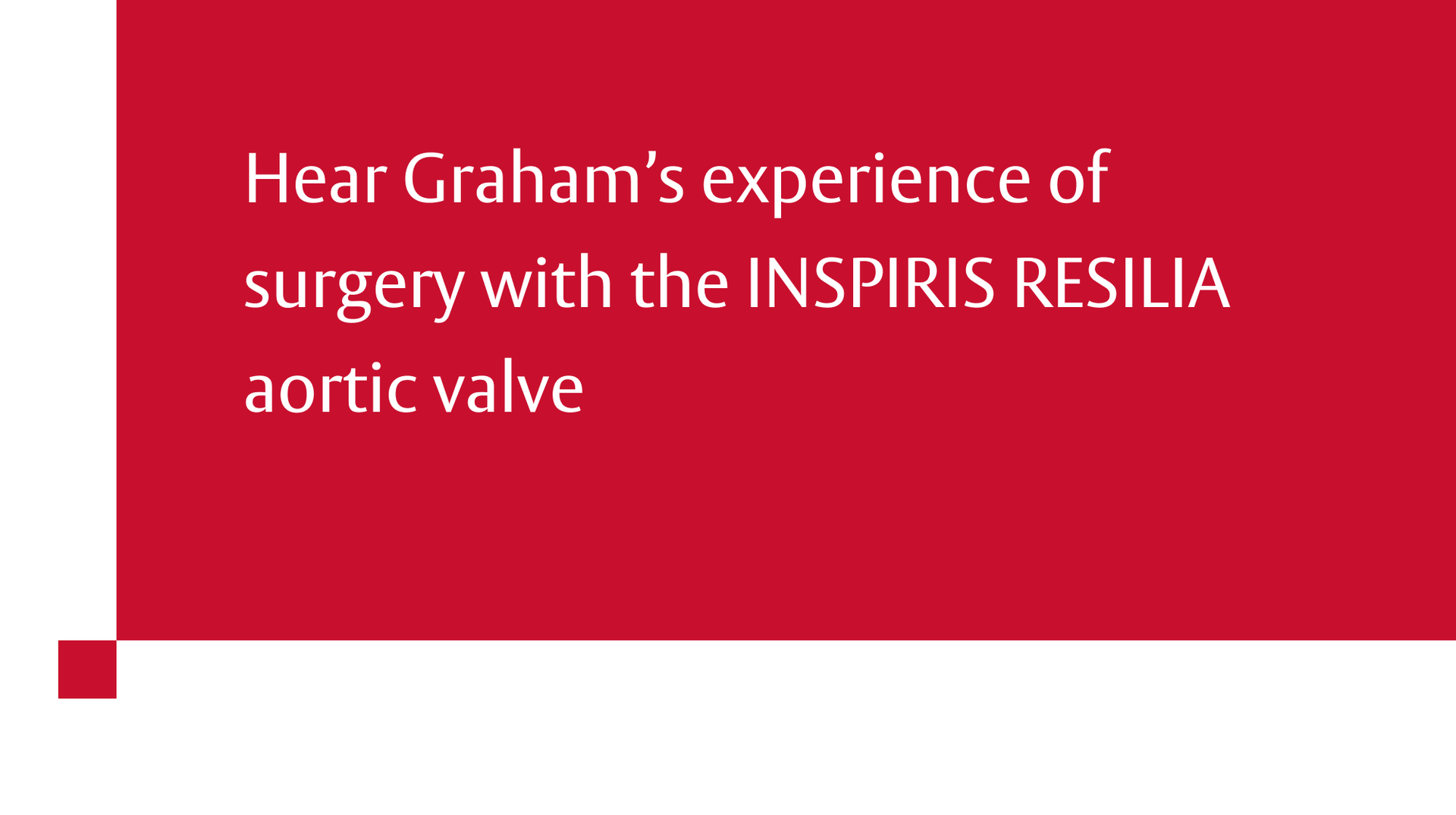
During treatment with warfarin, patients must undergo blood tests at least once a month to monitor their international normalised ratio (INR).2,3
Get closer to patient lifestyle.

With the INSPIRIS RESILIA aortic valve, your patients can live a life without the compromises of warfarin and that does not restrict their future treatment options.
Patients with a mechanical valve will need to make permanent changes to their lifestyles, such as:

During treatment with warfarin, patients must undergo blood tests at least once a month to monitor their international normalised ratio (INR).2,3

Many foods rich in vitamin K and common over-the-counter medications alter the anticoagulant effects of warfarin.2 They can affect the patient’s INR which may no longer sit within the effective range, leaving them temporarily unprotected.

Due to the risk of major bleeding, patients must limit some aspects of their lives, such as playing contact sports, needing to use soft-bristled toothbrushes, and shaving with electric razors rather than a blade.2
Unlike mechanical valves, the INSPIRIS RESILIA aortic valve does not require life-long treatment with warfarin.1
Direct-acting oral anticoagulants (DOACs, also known as NOACs) are the standard of care for atrial fibrillation (AF) but are contraindicated in patients with mechanical valves.4
of patients with severe aortic stenosis have atrial fibrillation5
Switching from DOACs to warfarin is necessary for patients with existing AF who receive a mechanical valve, and those who develop AF after receiving a mechanical valve cannot receive the AF standard of care.4
DOACs offer several advantages over warfarin including lower risk of intracranial bleeding, lower mortality and higher patient satisfaction.6–8
Mechanical valve choice can have a major impact on patients’ quality of life.*18 A higher proportion of patients report perceived disability, an effect on work, career or income, and dissatisfaction or doubt toward their choice, compared with patients with tissue valves.*18
*A prospective analysis examining the impact of mechanical or bioprosthetic valves in 500 patients aged 18 to 50 years. Outcomes included rates of mortality, stroke, bleeding events, reoperation; quality of life and additional data were obtained via phone interview in 2003, at a mean of 8±4.9 years after valve replacement.18
The mode of intervention and choice of prosthetic valve should be discussed with the patient so they can make an informed decision.1 However patients are not always fully aware of the long-term consequences on their lives and future treatment options. Consequences differ, not just between mechanical and tissue valves, but between each tissue valve option too.
of patients think it is important to be involved in their valve decision19
General cardiologists, with their close relationships to their patients, are ideally placed to talk through the options and their implications to help patients make the choice that’s right for them.


Visit our patient website, designed to help your patients have an informed conversation about their treatment
Visit site
Sign up now and don't miss any updates about our surgical therapies.

AF, atrial fibrillation; DOACS, Direct-acting oral anticoagulants; ESC; European Society of Cardiology; EACTS, European Association for Cardio-Thoracic Surgery; INR, international normalised ratio; NOACs, non-vitamin K oral anticoagulants; SAVR, surgical aortic valve replacement.
No clinical data are available that evaluate the long-term impact of RESILIA tissue in patients. Additional clinical data for up to 10 years of follow-up are being collected to monitor the long-term safety and performance of RESILIA tissue.
Refer to device instructions for use for important warnings related to VFit technology. These features have not been observed in clinical studies to establish the safety and effectiveness of the model 11500A for use in valve-in-valve procedures. VFit technology is available on sizes 19–25 mm.
Medical device for professional use. For a listing of indications, contraindications, precautions, warnings, and potential adverse events, please refer to the Instructions for Use (consult eifu.edwards.com where applicable).
For a listing of indications, contraindications, precautions, warnings, and potential adverse events, please refer to the Instructions for Use (consult eifu.edwards.com where applicable).